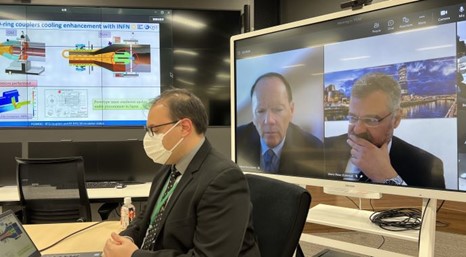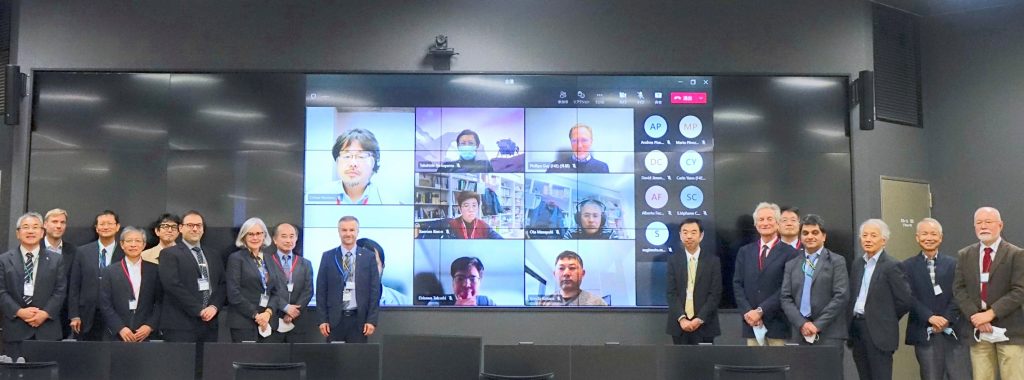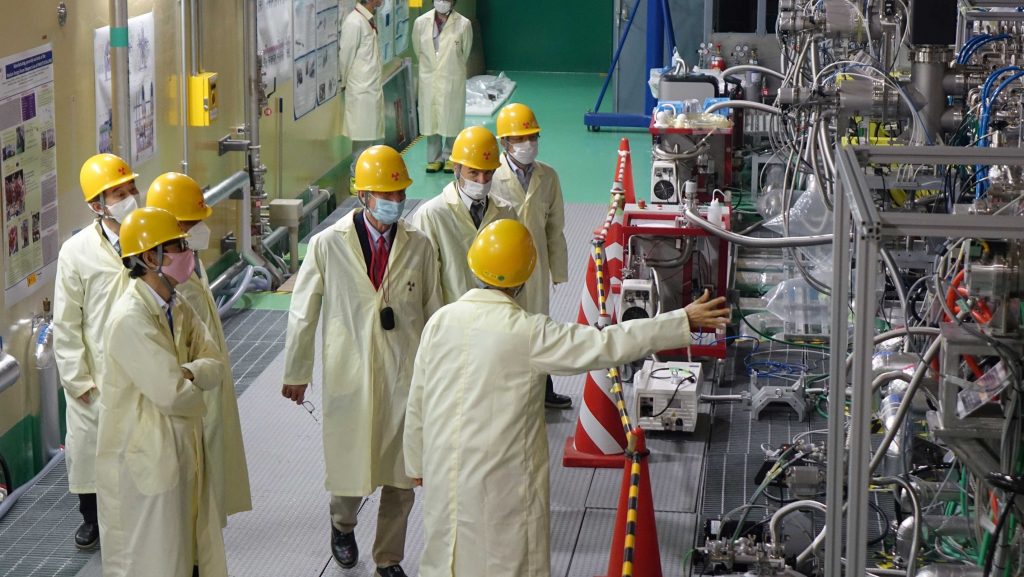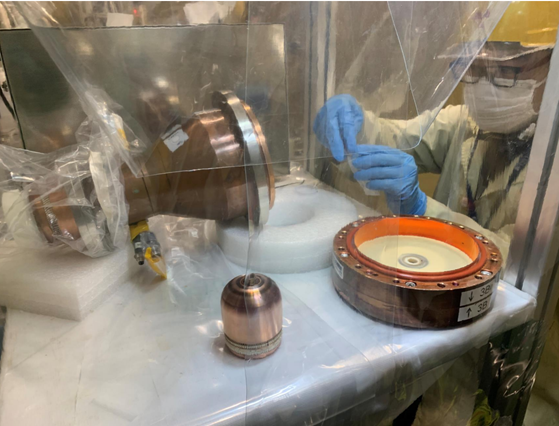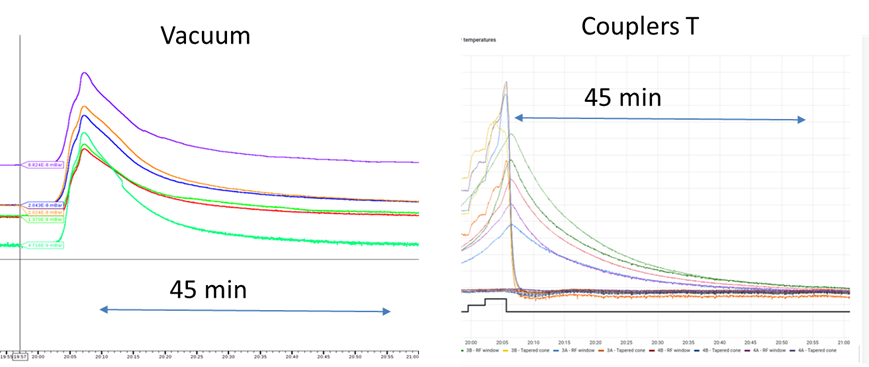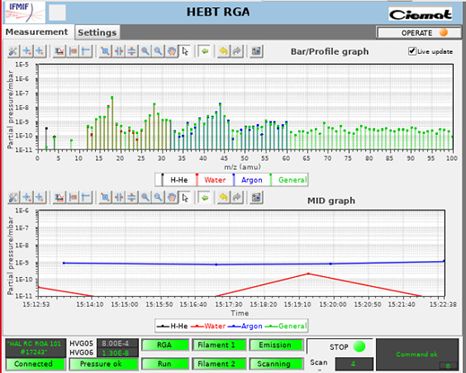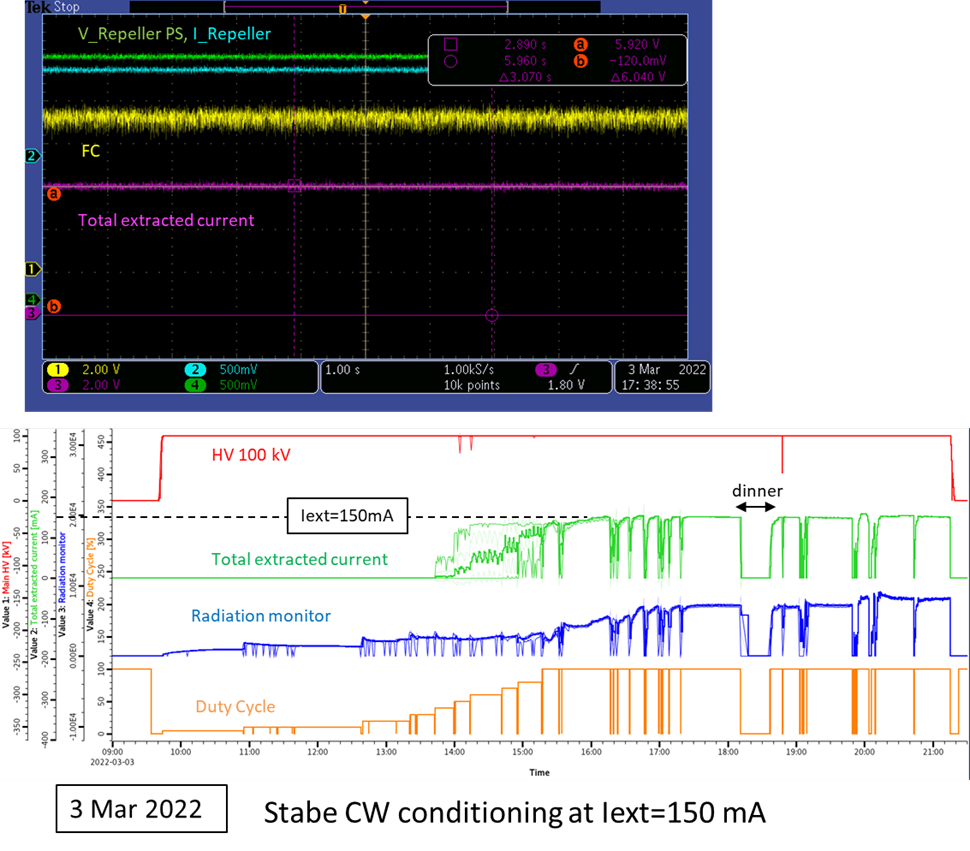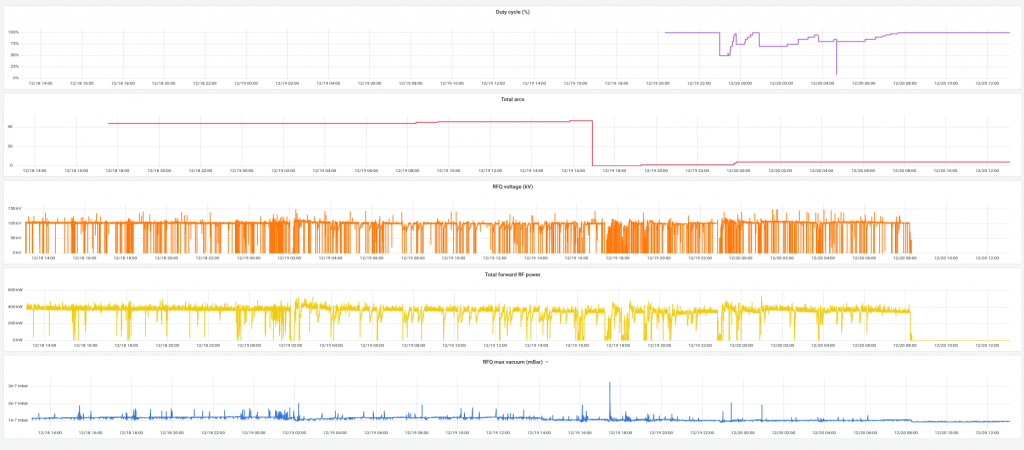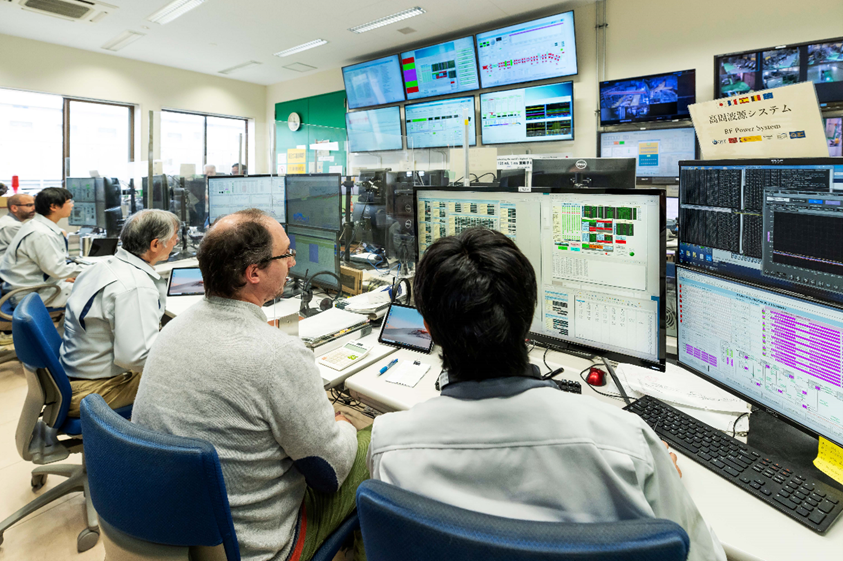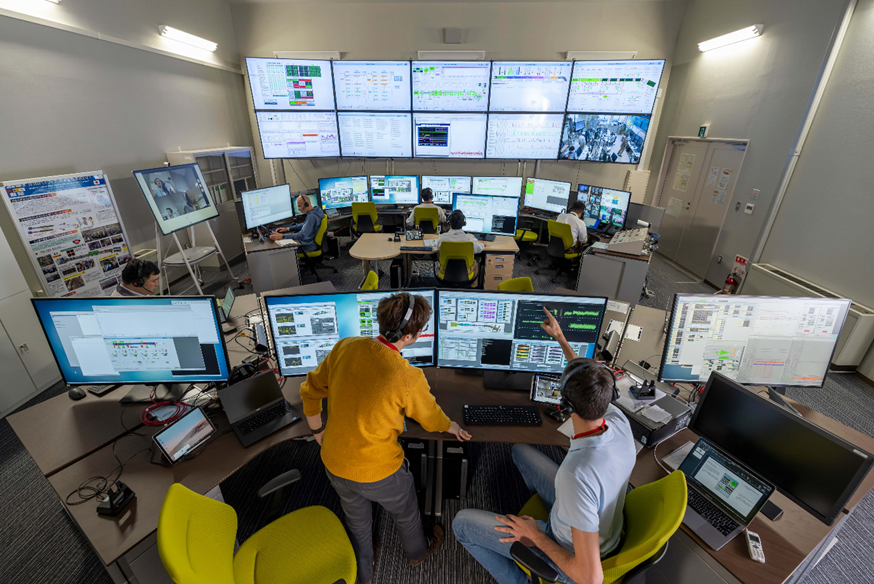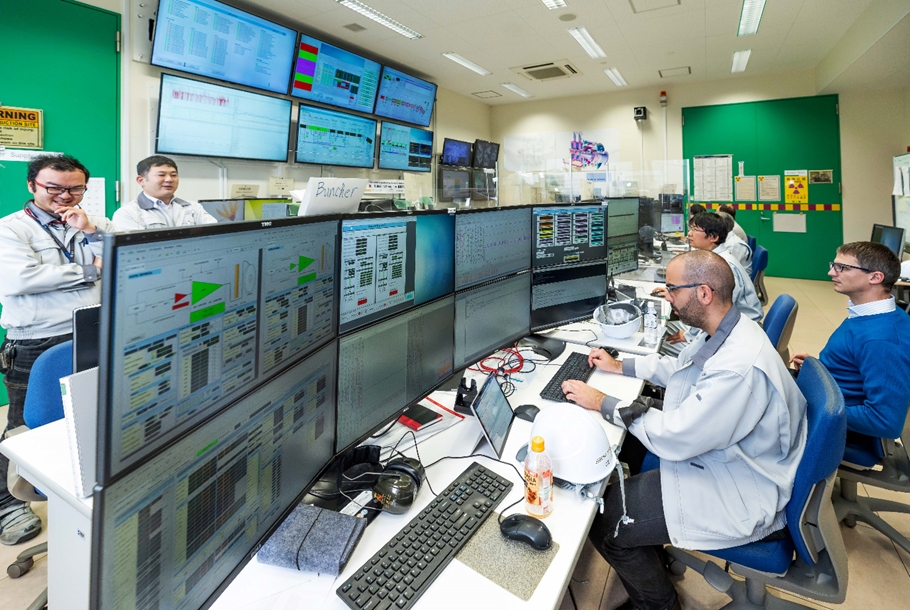The experimental campaign at the end of 2021 was successful. The first stage of Phase B+ was completed successfully by December 20 with D+ beam transported at low duty cycle and low current up to the BD. Beam operation was carried out during the day and RF-RFQ was switched to conditioning mode during the night. The duty cycle of RF-RFQ conditioning reached CW at the cavity voltage of 101 kV at the last moment of our activity on Sunday 19 December 2021.
At first, 100% was tried at 20:19 of 19 December with 20ms pulse length and 20ms repetition period (i.e. 50Hz). One event of coupler temperature over the interlock limit of 65°C at the 2A tapered cone section occurred at 20:35, however CW was kept until around 23:00.
At around 00:30 of 20 December, 100% was reached again but was not so stable.
At 07:38 of 20 December, 99.5% (mostly CW) was reached and kept it until 08:13: this was the last trial before stopping the system. See RF-RFQ conditioning summary plot for some details.
On December 20 all the systems were progressively stopped and winter maintenance with planned interventions started. We had a specialized company onsite for maintenance on the cooling skids and replacement of mechanical seals on the pumps of RF skid, RFQ skid and injector skid. After the interventions a water leak at the backup pump of injector skid could not be solved and another maintenance is planned in February. Resins for the water quality control have also been replaced in MEBT and HEBT skids. During the first week of break an alignment survey was performed in the vault for checking the difference of LEBT, RFQ and MEBT positioning with those observed in December 2020 and March 2021: the results show some systematical changes that are being analyzed carefully.
The maintenance on the injector and RF-RFQ systems was completed on 16 and 25 January respectively. The first part of 2022 will be dedicated to the injector and RF-RFQ CW campaigns. We target for the time being end of March for completing both CW campaigns.
The injector underwent standard maintenance and the Plasma Electrode was replaced with the 11mm size as agreed. The chopper was disassembled specifically for the CW campaign. The Emittance Meter Unit was checked. After the PPS test the HV conditioning started. 100 keV D+ beam extraction from the 11 mm plasma electrode is on-going for reaching 100 % DC at current higher than 150 mA: 120 mA in 10 ms pulse width over 300 ms period was reached as the first target. A trigger signal to synchronize the acquisition camera with the source pulse was implemented.
In the RF system a new SW for the LLRF autocalibration in the master chain was installed and confirmed to be operational; also the White Rabbit Grand Master was updated to suppress the desynchronization issue. In the RFQ pick-up sensors the calibration of data acquisition was completed and the data are being checked by INFN. After inspection of the DC pickup port of SSPA-A for buncher #2 (that showed signal issues last year) a test was carried out but it is confirmed that a new pick-up should be installed. The intervention is planned next week.
In the BD skid O2 control is unavailable due to N2 gas generator failure, and steady circulation through BD cartridge is to be avoided (currently the skid is kept running bypassing the cartridge). Currently we are facing a calibration issue in the pressure sensors of the BD skid and we are investigating the issue with help of CIEMAT. Remote sessions have resumed since few weeks as Japan has renewed the entry ban and CIEMAT mission is forced to be postponed.
All Fluorescence Profile Monitors (FPMs) have been disassembled and will be recalibrated (also with remote support by CIEMAT).
Beam Position Monitors (BPMs) Clock Board issue is under investigation and procurement of spares is being launched.
In the pictures below the beam operation from Local Control Room and Central Control Room
Disclaimer: the information reported is not meant to be technically complete and doesn’t cover all the activities currently carried out on LIPAc.



